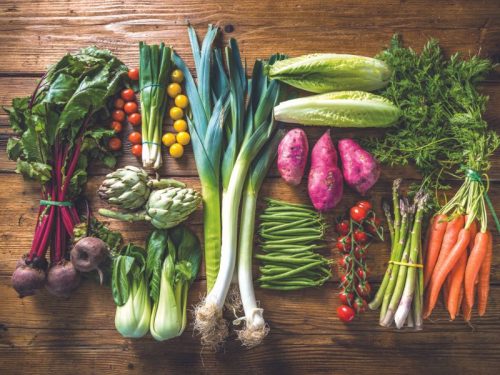Root-to-stem cooking
It recognises the nutritional value of edible vegetable parts such as peels, stems and roots that we often throw into the dustbin, and recommends their usage in every day cooking, writes Ramiya Sakthivel

The root-to-stem cooking movement is gaining momentum across the world. It recognises the nutritional value of edible vegetable parts such as peels, stems and roots that are usually thrown into the dustbin. The latest received wisdom is that stems and roots of vegetables have unique nutrients that traditionally valued veggies may not. “All plant parts including roots, stems, flowers, leaves, seeds and fruits are rich in minerals and vitamins and provide health benefits. We need to start using them mindfully in our daily cooking,” says Vasanthi Senthilvel, chief nutritionist, Newtrist Nutritionists, Bengaluru. She adds that adopting root-to-stem cooking also reduces household waste thereby contributing to a decline in methane emissions and environment protection.
In this PW special, Sakthivel suggests ways and means to include all plant parts in every day meals, and highlights their nutritional value.
• Moringa flowers are antibacterial. They boost energy, improve sexual health, lower cholesterol and strengthen bones. They can be added to vegetable gravies as also to soups.
• Potato and sweet potato skins are rich in antioxidants and numerous vitamins. However take care to wash them thoroughly. Don’t peel them and use with skin in cooking.
• Pumpkin leaves, flowers, fruits and seeds are good sources of B vitamins, magnesium, iron and protein. Roasted pumpkin seeds make an excellent snack.
• Roots or tubers such as carrots, beetroot, radish and turnips are also rich in fibre and several essential nutrients. Carrot and beet greens and turnip leaves should be added to salads, fried and used for garnishing, and also added to green sauces and chutneys.
• Use cauliflower and broccoli florets with their stems for inclusion in a variety of preparations such as cauliflower rice, broccoli stir fry, etc.
• Celeriac is the root bulb of the celery plant which is a substitute for potatoes in many recipes. It’s a low-carb food that can be stored in the refrigerator after trimming the greens and eaten raw or cooked. Celeriac roots are rich in antioxidants, high in fibre, vitamins, minerals, phosphorus, magnesium, and calcium.
• Dark green leek tops cooked for a while makes them extra delicious.
• Ginger, a commonly used ingredient in curries is an underground stem, often mistaken for a root. It has anti-inflammatory and medicinal properties and its skin and stem are edible. It provides relief from nausea, vomiting, menstrual cramps, and morning sickness. A cup of hot ginger tea is an excellent stimulant. Moreover, ginger can be added to black, milk, lemon and masala tea.
• Turmeric is an underground root that has antimicrobial, anti-inflammatory, and anti-cancerous properties. It contains curcumin which provides bright yellow colour to gravies and also acts as an antioxidant. It is often used as ayurvedic medicine for the treatment of numerous ailments including coughs and colds. You can add it to curries and milk as well.
• Coriander and mint have tender stems which are rich in potassium, calcium and Vitamin A. Use them in curries, chutneys or add to salads.
• Kale is a green, leafy, cruciferous vegetable rich in nutrients recommended for soups and casseroles. Kale stems are especially nutritious and can be charred and roasted to make a crispy snack. • Carrot, beetroot, and radish tops can be boiled with their greens to create nutrition-rich vegetable stock. Boil and drain, and use the stock for soups, gravies and pulaos.
• Broccoli stalks are often discarded because they are tough and take longer to cook than the florets. Slice them finely and stir-fry, use in green smoothies, soups and coleslaw.

















Add comment